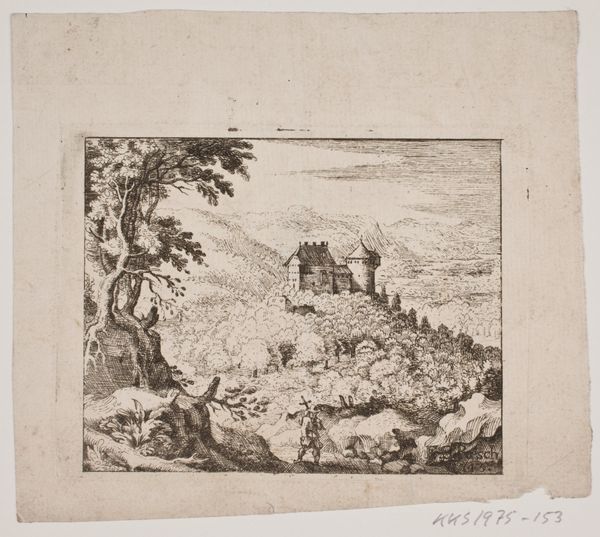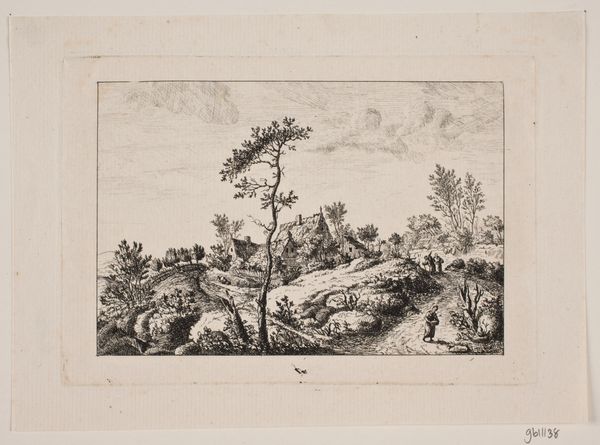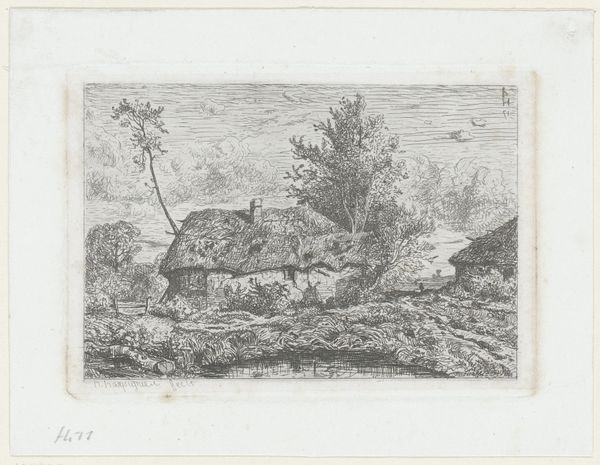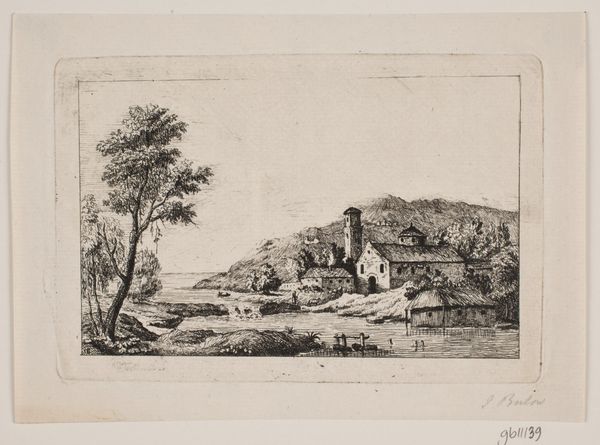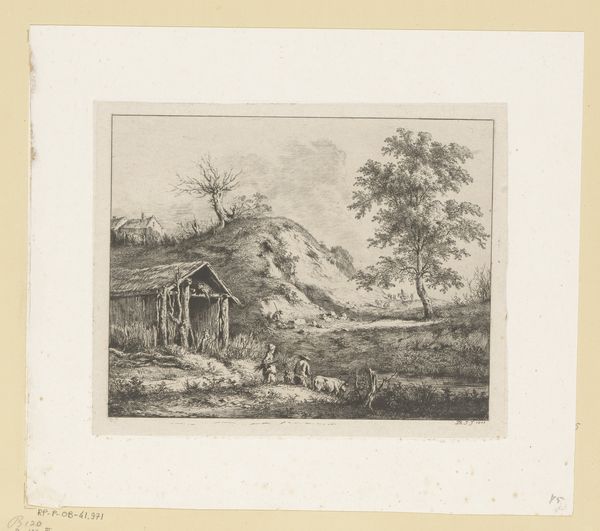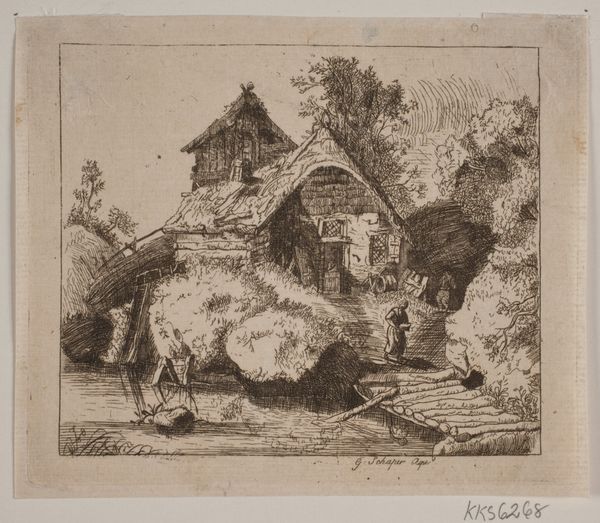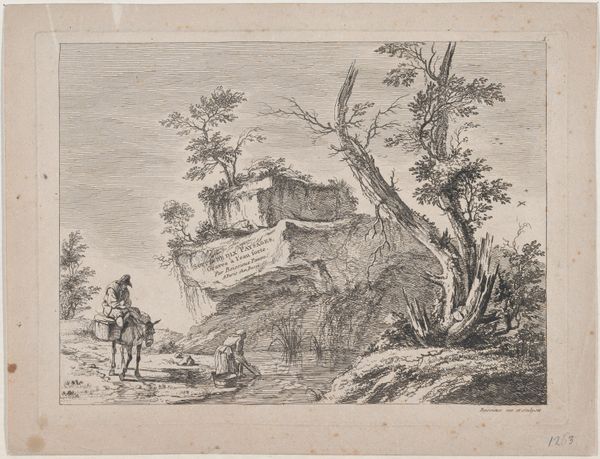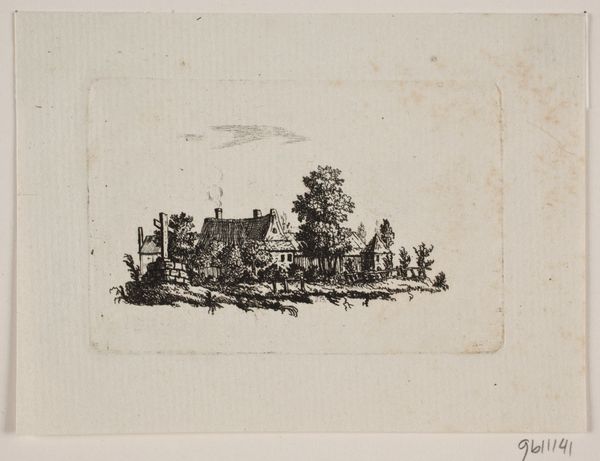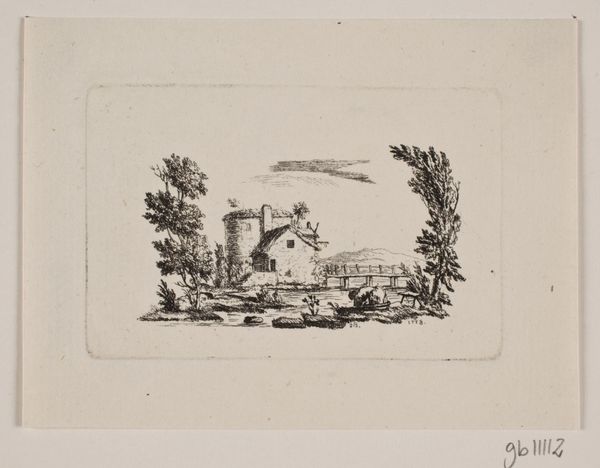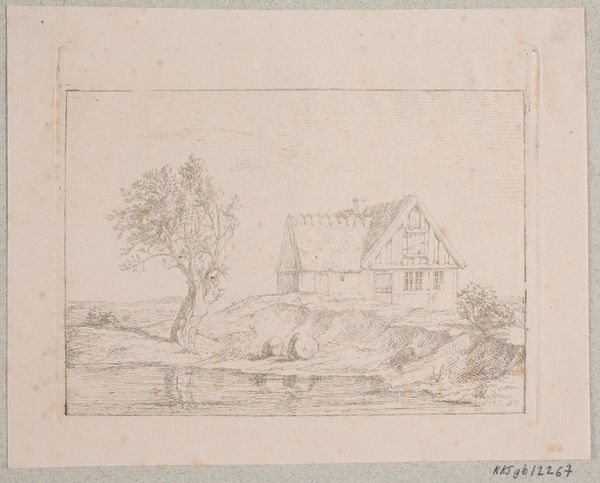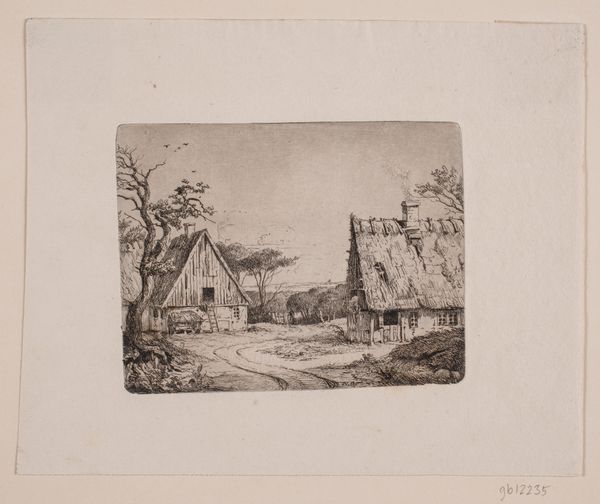
Dimensions: 51 mm (height) x 79 mm (width) (plademaal)
Editor: We're looking at Johan Bülow's "Landskab," an etching from 1778. It feels so intimate and detailed, but there's also a certain loneliness to the scene of this little house nestled in the landscape. What strikes you when you look at this piece? Curator: The apparent "loneliness" speaks volumes, doesn’t it? Bülow created this during the rise of Romanticism, where nature was idealized yet simultaneously recognized as an indifferent force. I wonder: is this isolated dwelling a commentary on humanity's fragile position within the vast, uncaring natural world? How might class play into it—do you think it glorifies rural life, or perhaps hints at the harsh realities of the peasantry? Editor: That's a great point. It could be a critique, subtly pointing to the socio-economic disparities of the time. I hadn't considered that! It does seem to be embracing simplicity, but maybe it's more complicated than just an idyllic scene? Curator: Exactly. The genre-painting tag makes me think about its connection to daily life but remember art rarely exists in a vacuum. By showing this, is Bülow passively observing the hierarchy of humans within their environmental roles, or does this small etching carry within its lines a silent discourse about power structures, gendered labour, or our footprint upon the landscape? Editor: So, even a seemingly simple landscape can be deeply political? Curator: Absolutely. And by looking closely at Bülow's technique, and at his choices – what he includes and what he omits – we can ask questions about the bigger picture beyond aesthetics. Editor: That makes me see it in a whole new light. I thought it was just a pretty picture, but there’s so much more to unpack! Thanks for pointing that out! Curator: It's all about the dialogue, about recognizing that art can both reflect and shape our understanding of the world.
Comments
No comments
Be the first to comment and join the conversation on the ultimate creative platform.
